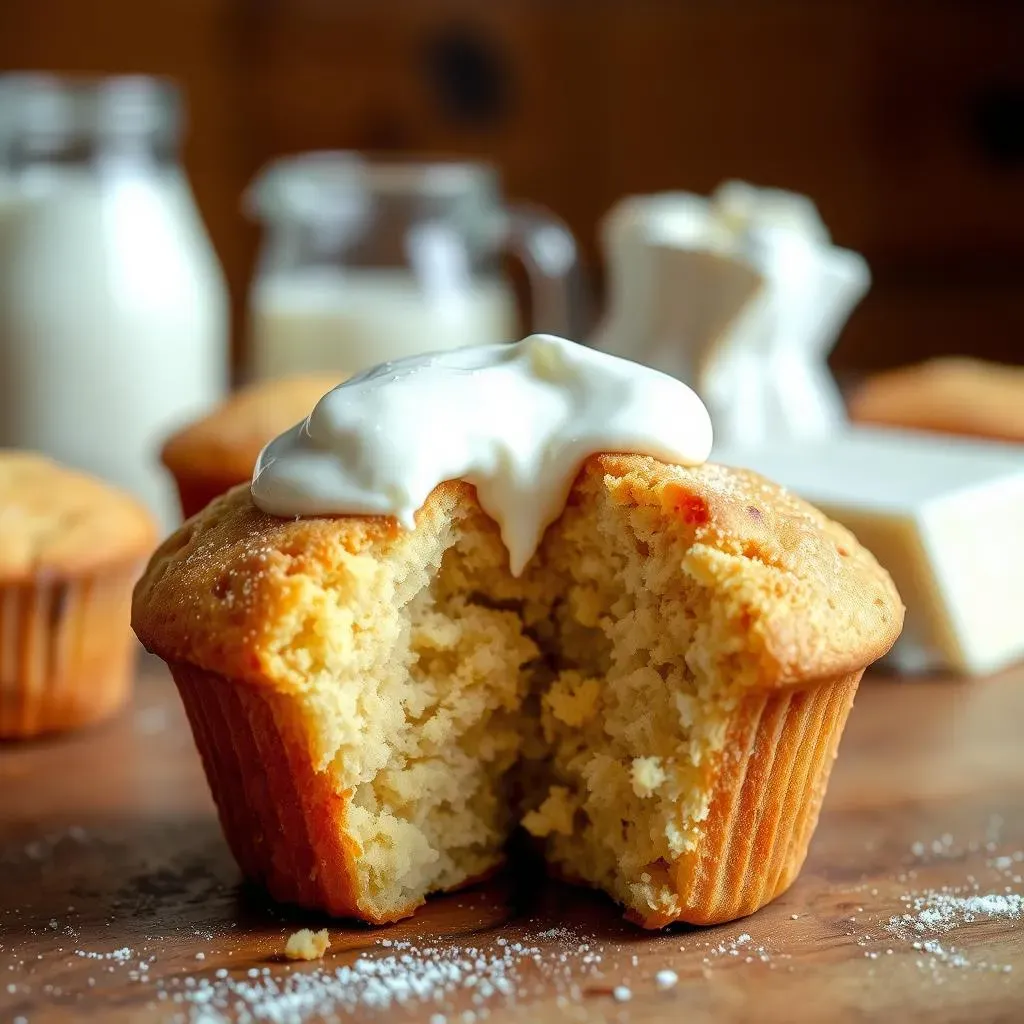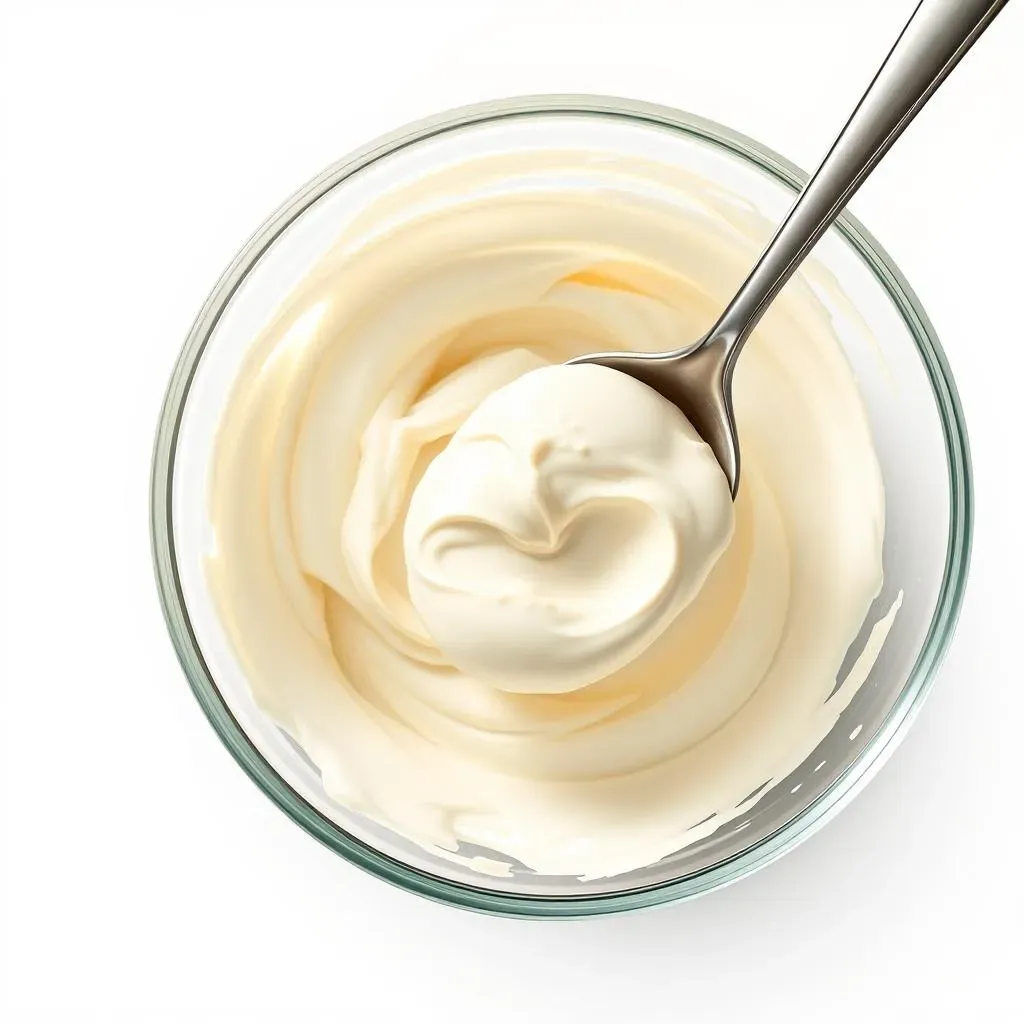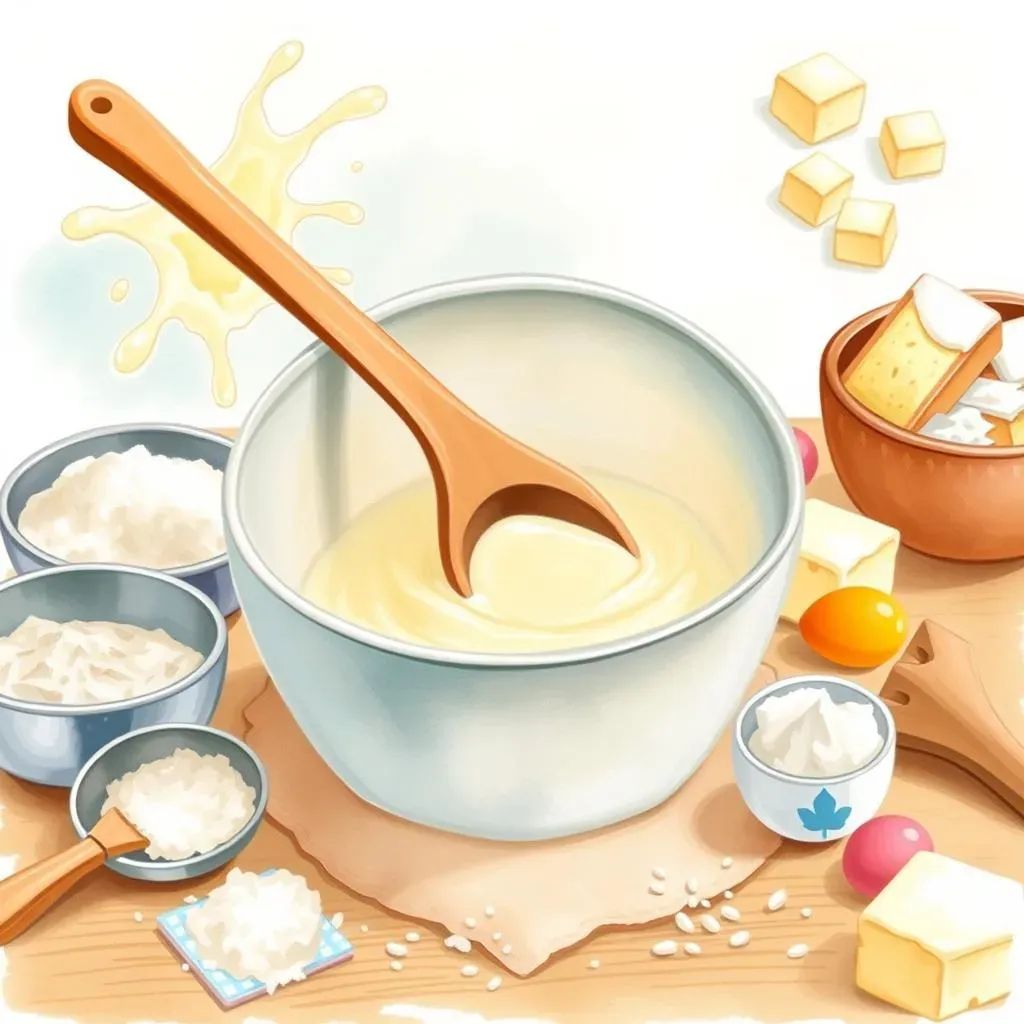Table of Contents
Have you ever stared into your fridge, recipe in hand, only to realize you're missing a key ingredient? Specifically, that creamy, tangy dollop of sour cream? This common baking dilemma has many of us wondering: "Can I substitute buttermilk for sour cream?" The answer, thankfully, is often yes, but it's not always a simple one-to-one swap. This article will equip you with the knowledge to make informed decisions about substituting buttermilk for sour cream, ensuring your baking adventures remain delicious and successful. We'll explore the subtle yet significant differences between these two dairy products, examining their texture, acidity, and fat content. Understanding these differences is key to mastering successful substitutions. Then, we'll dive into practical examples, providing clear guidelines and helpful tips for various recipes, from cakes and muffins to dips and sauces. By the end, you'll be confident in your ability to swap buttermilk for sour cream (or vice versa!), creating tasty treats without a second thought. So, let's get started and unravel the mysteries of these versatile dairy ingredients!
Can I Substitute Buttermilk for Sour Cream in Baking?

Can I Substitute Buttermilk for Sour Cream in Baking?
The Straightforward Answer: Sometimes
So, you're wondering, "Can I substitute buttermilk for sour cream in baking?" The short answer is: it depends. While not a perfect swap, buttermilk can often work as a sour cream substitute, especially in recipes where the sour cream's primary role is to add moisture and a slight tang. Think quick breads, muffins, or even some cakes. However, sour cream contributes a richness and creaminess that buttermilk lacks. If your recipe relies heavily on that creamy texture for its success, like in certain frostings or cheesecakes, then buttermilk might not be the best choice. For a more in-depth look at other sour cream substitutes, check out our ultimate guide to cream cheese as a sour cream substitute.
The key is understanding *why* sour cream is in the recipe. Is it for flavor, texture, or both? If it's primarily for moisture, a buttermilk substitution might work well with minor adjustments. If it's for that luxurious mouthfeel, you might need a different replacement altogether – maybe even a combination of ingredients to mimic the sour cream's properties. Remember, every recipe is unique, so always consider the specific ingredients and their functions before attempting a substitution. You might be interested in learning more about using Greek yogurt as a substitute in baking as well.
Ingredient | Primary Function | Buttermilk as a Substitute? |
|---|---|---|
Sour Cream | Moisture, richness, tang | Sometimes, with adjustments |
Buttermilk | Moisture, tang, leavening aid | Often a good substitute for moisture and tang |
Adjustments for Successful Substitution
When substituting buttermilk for sour cream, remember that buttermilk is thinner and less rich. To compensate, you might need to add a little extra flour to thicken the batter or dough. Additionally, since sour cream often provides a richer flavor, you might want to add a pinch of extra salt or a touch of lemon juice to enhance the tanginess. The ratio is usually about ¾ cup of buttermilk for every 1 cup of sour cream. Think of it as a starting point, not a hard and fast rule. You can always fine-tune the amount depending on the recipe and the desired outcome. It's always a good idea to start with a small batch or test recipe before committing to a large quantity.
Remember, baking is a science as much as it is an art. Experimentation is key. Don't be afraid to try different ratios and make subtle adjustments to achieve the perfect result. If a recipe calls for a significant amount of sour cream, you might want to explore other alternatives. You might consider heavy cream as a substitute, depending on the recipe's requirements. The beauty of baking lies in the process of discovery and perfecting your own techniques. So, embrace the challenge, get creative, and enjoy the journey!
- Adjust flour for thickness.
- Add a pinch of salt to enhance flavor.
- Consider adding a touch of lemon juice for extra tang.
- Start with a small batch to test.
Understanding the Differences: Buttermilk vs. Sour Cream

Understanding the Differences: Buttermilk vs. Sour Cream
Texture and Thickness
Let's talk texture! Sour cream is thick, luscious, and spoonable. Think of it as a creamy cloud you can spread or dollop. Buttermilk, on the other hand, is thinner and more liquidy. It's pourable, more like a slightly thickened milk. This difference in consistency is crucial when considering substitutions. In recipes where the creamy texture of sour cream is essential, like in a rich frosting, directly swapping in buttermilk would drastically alter the final product. You'd end up with something far runnier and less appealing. For a richer alternative, consider exploring heavy cream as a substitute instead.
Think of it this way: if you're making a creamy dip, sour cream's thickness is key. Buttermilk, being thinner, just won't cut it. However, in a recipe where the main goal is to add moisture and a bit of tang, the thinner consistency of buttermilk might be perfectly acceptable. It’s all about knowing your recipe’s needs! If you're unsure, a small test batch is your best friend. A little experimentation goes a long way in baking.
- Sour cream: Thick, spoonable
- Buttermilk: Thinner, pourable
Acidity and Flavor Profiles
Both buttermilk and sour cream have a tangy flavor, thanks to lactic acid. However, their levels of acidity differ slightly. Buttermilk tends to be a bit more tart, while sour cream offers a milder, creamier tang. This difference in acidity can influence how the ingredients react in a recipe, especially in baking. In recipes where acidity plays a crucial role, such as activating baking soda, buttermilk's higher acidity might be preferable. The extra tang also adds a unique dimension to baked goods, enhancing the overall flavor profile. For a comparison of other tangy substitutes, check out our guide on using Greek yogurt.
Consider this: If you're making pancakes, buttermilk's higher acidity contributes to a fluffier texture and a slightly more pronounced tang. However, in a creamy potato salad, sour cream’s milder tang and richer texture would likely be a better choice. The best substitute depends on the specific recipe and the desired outcome. Remember, baking is all about balance! A small adjustment can make a big difference in the final result. Want to explore even more options? You might find our article on substituting cottage cheese for sour cream interesting.
Ingredient | Acidity Level | Flavor Profile |
|---|---|---|
Sour Cream | Mild | Creamy tang |
Buttermilk | Higher | Tart tang |
Successful Substitutions: Buttermilk for Sour Cream in Recipes

Successful Substitutions: Buttermilk for Sour Cream in Recipes
Cakes and Quick Breads
Let's start with cakes and quick breads – perfect candidates for a buttermilk-for-sour-cream swap! In these recipes, sour cream often acts as a moistening agent, adding tenderness and a subtle tang. Buttermilk, with its similar acidity and moisture-giving properties, can step in beautifully. The key is to adjust the other ingredients slightly. Since buttermilk is thinner, you might need to add a tablespoon or two of extra flour to achieve the right consistency. Also, keep in mind that buttermilk's tang is a bit sharper than sour cream's. You might want to reduce the amount of added sugar or lemon juice if the recipe already contains these ingredients. Remember, experimenting is part of the fun! Don't be afraid to make small adjustments until you find the perfect balance. For more ideas on substitutions, you might find our article on Greek yogurt as a sour cream substitute helpful.
For example, in a recipe calling for 1 cup of sour cream, try substituting ¾ cup of buttermilk. Start by mixing the dry ingredients and then slowly incorporate the wet ingredients, including the buttermilk. Observe the batter's consistency. If it seems too thin, add a little more flour, a tablespoon at a time, until you reach the desired thickness. If the batter seems too thick, add a tiny bit of milk to thin it out. Remember, a little experimentation can go a long way!
- Adjust flour for optimal consistency.
- Taste and adjust sugar or lemon juice as needed.
- Start with a smaller batch for testing.
Dips and Dressings
Now, let's talk dips and dressings! This is where the texture difference between buttermilk and sour cream becomes more significant. Sour cream's thickness is essential for creating creamy, spoonable dips. Buttermilk, being thinner, won't provide the same luxurious texture. However, in certain dressings where a slightly thinner consistency is desirable, buttermilk might work surprisingly well. For example, in a creamy vinaigrette or a buttermilk ranch dressing, buttermilk's tanginess can add a delightful twist. Just keep in mind that you might need to add a thickening agent like mayonnaise or a little cornstarch to achieve the desired texture. For a different perspective on creamy substitutes, check out our article on using cottage cheese instead of sour cream.
Let's say you're making a creamy dill dip. While buttermilk might not provide the same thickness as sour cream, it can still deliver a tangy flavor. To thicken the dip, you could add a spoonful of Greek yogurt or a little sour cream (if you have a tiny bit left!). You could also incorporate some finely chopped fresh herbs to add flavor and texture. Remember, adapting a recipe to work with available ingredients is a skill every baker should hone! It's a chance to get creative and personalize your recipes.
Recipe Type | Buttermilk Works Well? | Considerations |
|---|---|---|
Cakes/Quick Breads | Yes, with minor adjustments | Adjust flour, sugar, or lemon juice as needed. |
Dips/Dressings | Sometimes, depending on desired consistency | May need a thickening agent (mayonnaise, cornstarch). |